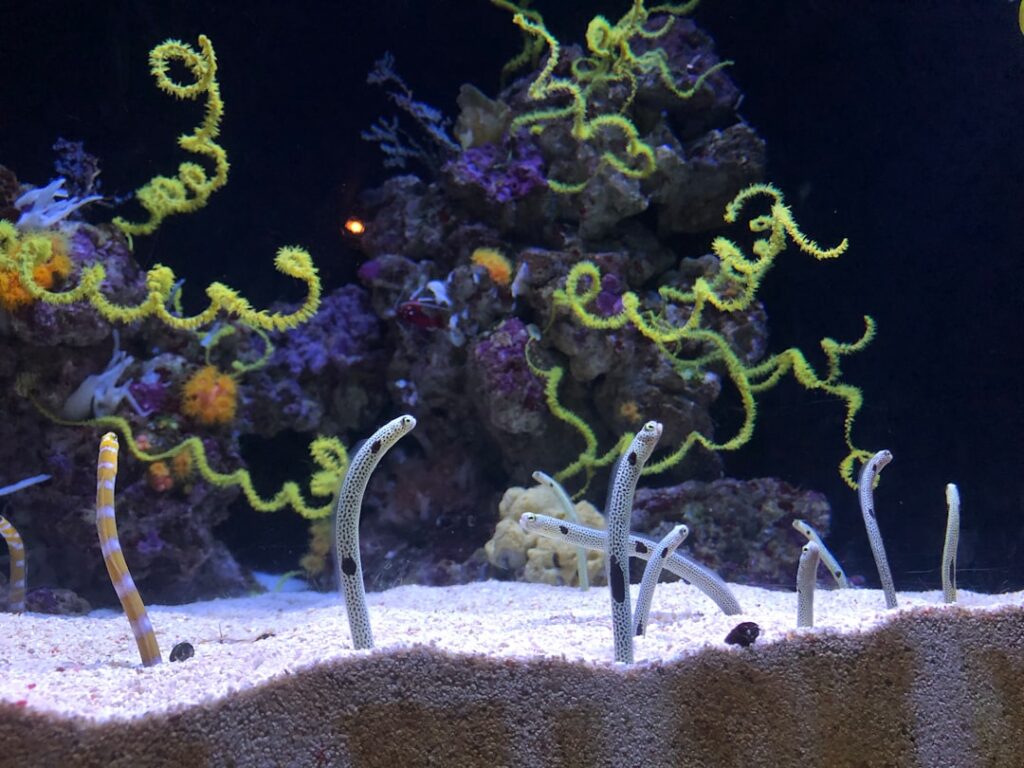
Sponge filters are a popular choice for aquarium filtration due to their numerous benefits. One of the main advantages of sponge filters is their ability to provide biological filtration. The sponge material provides a large surface area for beneficial bacteria to colonize, which helps to break down harmful ammonia and nitrites in the water. This biological filtration process is essential for maintaining a healthy and stable aquatic environment for fish and other aquatic creatures.
Another benefit of sponge filters is their gentle water flow. Unlike some other types of filters, sponge filters provide a gentle and consistent flow of water, which is ideal for delicate fish and invertebrates. The gentle flow also helps to prevent the accumulation of debris and uneaten food in the aquarium, leading to cleaner water and a healthier environment for your aquatic pets.
In addition to their filtration capabilities, sponge filters are also easy to maintain and cost-effective. The sponge material is easy to clean and can be reused multiple times, making sponge filters a sustainable and budget-friendly option for aquarium owners. Overall, the benefits of sponge filters make them a popular choice for both beginner and experienced aquarists looking to maintain a clean and healthy aquatic environment.
Key Takeaways
- Sponge filters provide gentle and effective filtration for aquariums, promoting a healthy environment for fish and other aquatic life.
- When choosing a sponge filter, consider the size of your aquarium, the type of fish you have, and the level of filtration needed.
- Setting up and maintaining a sponge filter involves simple steps such as rinsing the sponge regularly and ensuring proper water flow.
- Sponge filters maximize biological filtration by providing a large surface area for beneficial bacteria to thrive and break down waste.
- Using a sponge filter can enhance water clarity and quality by removing debris and improving oxygenation, creating a cleaner and healthier environment for fish.
Choosing the Right Sponge Filter for Your Aquarium
When choosing a sponge filter for your aquarium, there are several factors to consider to ensure you select the right option for your specific needs. One of the first things to consider is the size of your aquarium. Sponge filters come in various sizes and flow rates, so it’s important to choose a filter that is appropriate for the size of your tank. A filter that is too small may not provide adequate filtration, while a filter that is too large may create excessive water flow, which can be stressful for your aquatic pets.
Another important factor to consider is the type of aquatic creatures in your tank. Some fish and invertebrates may require a higher or lower flow rate, so it’s important to choose a sponge filter that provides the appropriate water flow for your specific inhabitants. Additionally, consider the design and construction of the sponge filter. Look for a filter with a durable and high-quality sponge material that will provide effective filtration and withstand regular cleaning.
Lastly, consider any additional features or accessories that may be beneficial for your aquarium. Some sponge filters come with adjustable flow rates, multiple sponges for increased filtration capacity, or suction cups for secure placement in the tank. By considering these factors, you can choose the right sponge filter that will effectively meet the filtration needs of your aquarium.
Setting Up and Maintaining a Sponge Filter
Setting up a sponge filter in your aquarium is a straightforward process, but it’s important to follow the proper steps to ensure effective filtration and the well-being of your aquatic pets. To set up a sponge filter, begin by attaching the airline tubing to the air pump and placing the other end of the tubing onto the air inlet of the sponge filter. Once the tubing is connected, place the sponge filter in the desired location within the aquarium, ensuring that it is securely positioned and has adequate water flow.
After setting up the sponge filter, it’s important to regularly maintain and clean the filter to ensure optimal performance. To clean the sponge filter, remove it from the aquarium and gently squeeze it in a bucket of aquarium water to remove any debris and waste that has accumulated. Avoid using tap water or cleaning agents, as these can harm the beneficial bacteria in the sponge. After cleaning, reattach the sponge filter to the airline tubing and place it back in the aquarium.
In addition to regular cleaning, it’s important to monitor the airflow and water flow of the sponge filter to ensure it is functioning properly. Check the air pump regularly to ensure it is providing adequate airflow to the filter, and monitor the water flow to ensure it is consistent and not causing any disturbances in the tank. By following these steps for setting up and maintaining a sponge filter, you can ensure effective filtration and a healthy aquatic environment for your fish and other inhabitants.
Maximizing Biological Filtration with a Sponge Filter
One of the key benefits of sponge filters is their ability to provide effective biological filtration in aquariums. The sponge material provides a large surface area for beneficial bacteria to colonize, which helps to break down harmful ammonia and nitrites in the water. To maximize biological filtration with a sponge filter, there are several steps you can take to promote the growth of beneficial bacteria.
One way to maximize biological filtration is to ensure that the sponge filter is properly cycled before adding fish or other aquatic creatures to the aquarium. Cycling a sponge filter involves allowing it to run in a tank with beneficial bacteria for several weeks before introducing any inhabitants. This allows the bacteria to establish and colonize the sponge, providing effective biological filtration from the start.
Another way to maximize biological filtration is to provide a stable and consistent environment for beneficial bacteria to thrive. This includes maintaining proper water parameters, such as temperature, pH, and ammonia levels, as well as avoiding any sudden changes or disturbances in the tank. By providing a stable environment, you can promote the growth of beneficial bacteria and ensure effective biological filtration with your sponge filter.
Additionally, consider supplementing biological filtration with regular water changes and maintenance to remove excess waste and debris from the aquarium. By taking these steps to maximize biological filtration with a sponge filter, you can create a healthy and stable aquatic environment for your fish and other inhabitants.
Enhancing Water Clarity and Quality with a Sponge Filter
In addition to providing biological filtration, sponge filters can also enhance water clarity and quality in aquariums. The sponge material effectively traps debris and waste particles from the water, leading to cleaner and clearer water in the tank. This not only improves the aesthetic appeal of the aquarium but also creates a healthier environment for fish and other aquatic creatures.
To enhance water clarity and quality with a sponge filter, it’s important to regularly clean and maintain the filter to remove accumulated debris and waste. By cleaning the sponge filter on a regular basis, you can prevent clogging and ensure optimal filtration performance. Additionally, consider supplementing filtration with regular water changes to remove any excess waste and maintain proper water parameters.
Another way to enhance water clarity and quality is to use activated carbon or other chemical filtration media in conjunction with the sponge filter. Activated carbon can help remove impurities and odors from the water, leading to improved water quality and clarity in the aquarium. By combining mechanical filtration with chemical filtration, you can create a clean and healthy aquatic environment for your fish and other inhabitants.
Overall, sponge filters are an effective tool for enhancing water clarity and quality in aquariums. By maintaining and supplementing filtration as needed, you can create a clean and clear aquatic environment that promotes the health and well-being of your aquatic pets.
Using Sponge Filters for Breeding and Fry Tanks

Sponge filters are particularly well-suited for use in breeding and fry tanks due to their gentle water flow and effective biological filtration capabilities. The gentle flow provided by sponge filters is ideal for delicate fry and young fish, as it minimizes the risk of injury or stress from strong currents. Additionally, the large surface area of the sponge material provides ample space for beneficial bacteria to colonize, which is essential for maintaining stable water parameters in breeding and fry tanks.
When using sponge filters in breeding and fry tanks, it’s important to select a filter size and flow rate that is appropriate for the size of the tank and the number of inhabitants. A properly sized sponge filter will provide adequate filtration without creating excessive water flow that could disturb fry or young fish. Additionally, consider using multiple sponge filters or larger filters in larger breeding tanks to ensure effective filtration throughout the entire tank.
In addition to providing effective filtration, sponge filters can also serve as safe spawning sites for some species of fish. The porous nature of the sponge material provides an ideal surface for fish to deposit their eggs, offering protection from predators and creating a natural spawning environment. By using sponge filters in breeding and fry tanks, you can provide a safe and stable environment for breeding fish and their offspring while promoting healthy growth and development.
Troubleshooting Common Issues with Sponge Filters
While sponge filters are generally reliable and low-maintenance, there are some common issues that may arise when using them in aquariums. One common issue is reduced water flow or clogging of the sponge material due to accumulated debris or waste. To address this issue, regularly clean and maintain the sponge filter by gently squeezing it in a bucket of aquarium water to remove any debris. If clogging persists, consider using multiple sponge filters or larger filters in larger tanks to ensure adequate filtration capacity.
Another common issue with sponge filters is excessive noise or vibrations from the air pump or tubing. This can be caused by air leaks or improper placement of the air pump or tubing. To troubleshoot this issue, check for any air leaks in the tubing or connections, and ensure that the air pump is securely placed on a level surface away from direct contact with the aquarium or other objects. Additionally, consider using a check valve in the airline tubing to prevent backflow or siphoning that could cause noise or vibrations.
In some cases, beneficial bacteria may be disrupted or lost during cleaning or maintenance of the sponge filter, leading to an increase in ammonia or nitrite levels in the tank. To address this issue, avoid using tap water or cleaning agents when cleaning the sponge filter, as these can harm beneficial bacteria. Additionally, consider supplementing biological filtration with beneficial bacteria supplements or additives to help restore bacterial colonies in the filter.
By troubleshooting these common issues with sponge filters, you can ensure effective filtration and maintain a healthy aquatic environment for your fish and other inhabitants. Regular maintenance and monitoring of your sponge filter will help prevent issues from arising and promote optimal performance in your aquarium.
Sure, here’s a paragraph mentioning a related article to sponge filter:
If you’re interested in learning more about aquarium filtration systems, you might want to check out this informative article on the benefits of using LED lighting for planted tanks. LED lighting not only enhances the visual appeal of your aquarium but also promotes healthy plant growth. To read more about this topic, visit TreeVisualsLED.
FAQs
What is a sponge filter?
A sponge filter is a type of aquarium filter that uses a sponge to mechanically and biologically filter the water in the tank.
How does a sponge filter work?
A sponge filter works by drawing water through the porous sponge, which traps debris and provides a surface for beneficial bacteria to grow and break down waste products.
What are the benefits of using a sponge filter?
Sponge filters are known for their simplicity, low cost, and effectiveness in providing mechanical and biological filtration. They are also gentle on delicate fish and shrimp, making them a popular choice for breeding tanks and small aquariums.
How do you clean a sponge filter?
To clean a sponge filter, simply remove it from the aquarium and rinse it in dechlorinated water. Squeezing the sponge in the water will help dislodge any trapped debris. It’s important to avoid using tap water or any cleaning agents that could harm the beneficial bacteria living in the sponge.
Can a sponge filter be used in a saltwater aquarium?
Yes, sponge filters can be used in both freshwater and saltwater aquariums. They are particularly popular in saltwater tanks for their ability to provide gentle filtration without disturbing delicate corals and invertebrates.
How long does a sponge filter last?
With proper care and maintenance, a sponge filter can last for several years. Regular cleaning and occasional replacement of the sponge itself will help ensure the filter continues to function effectively.


